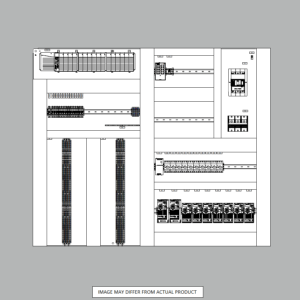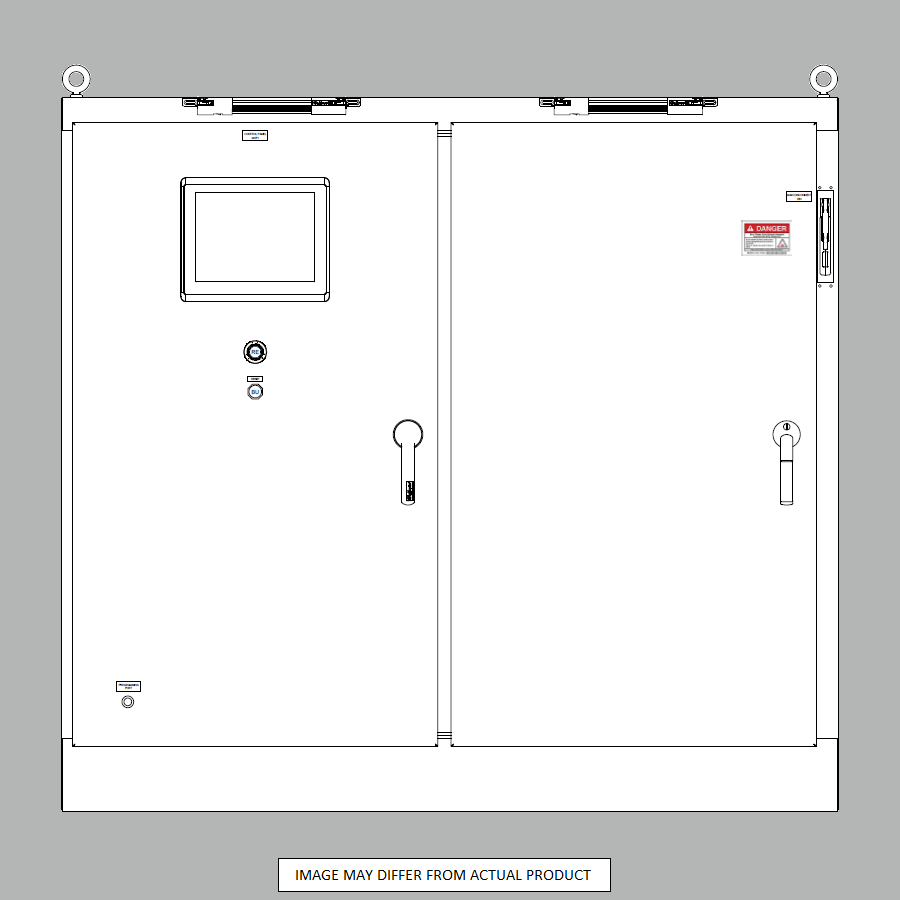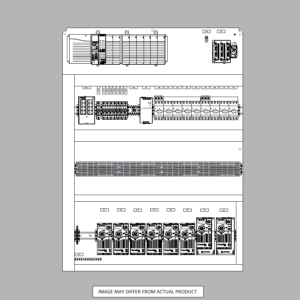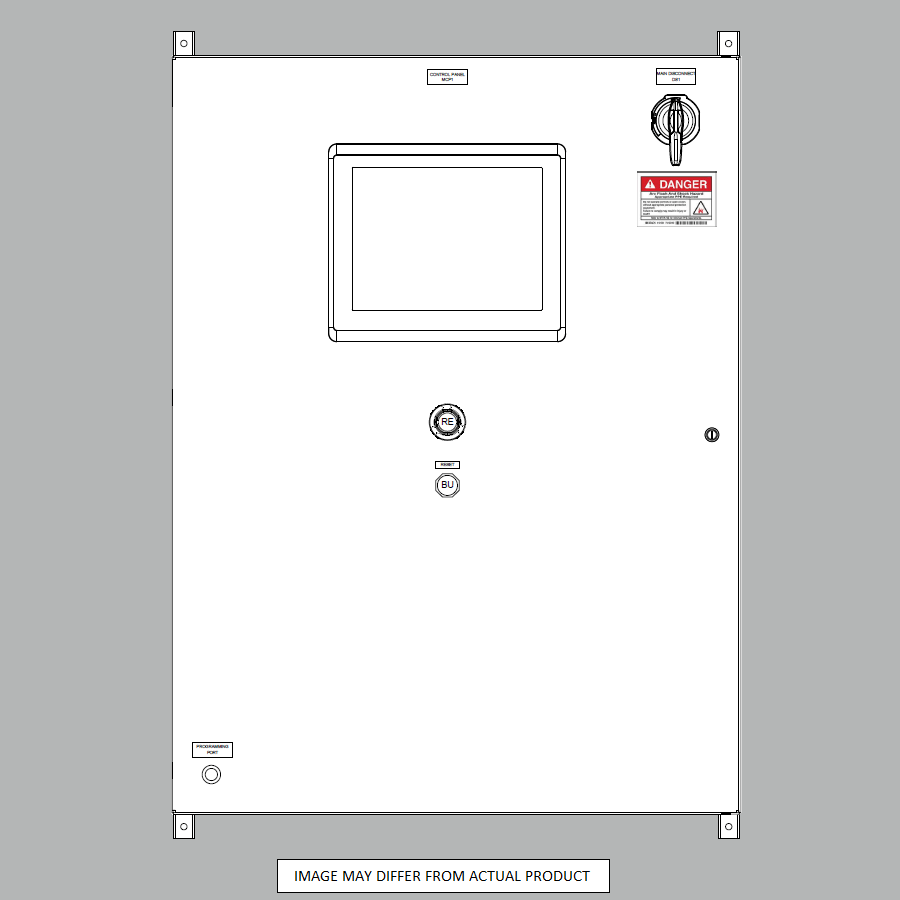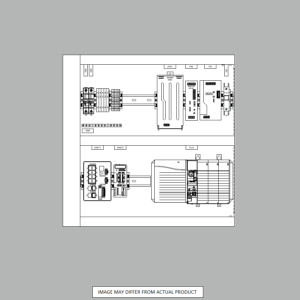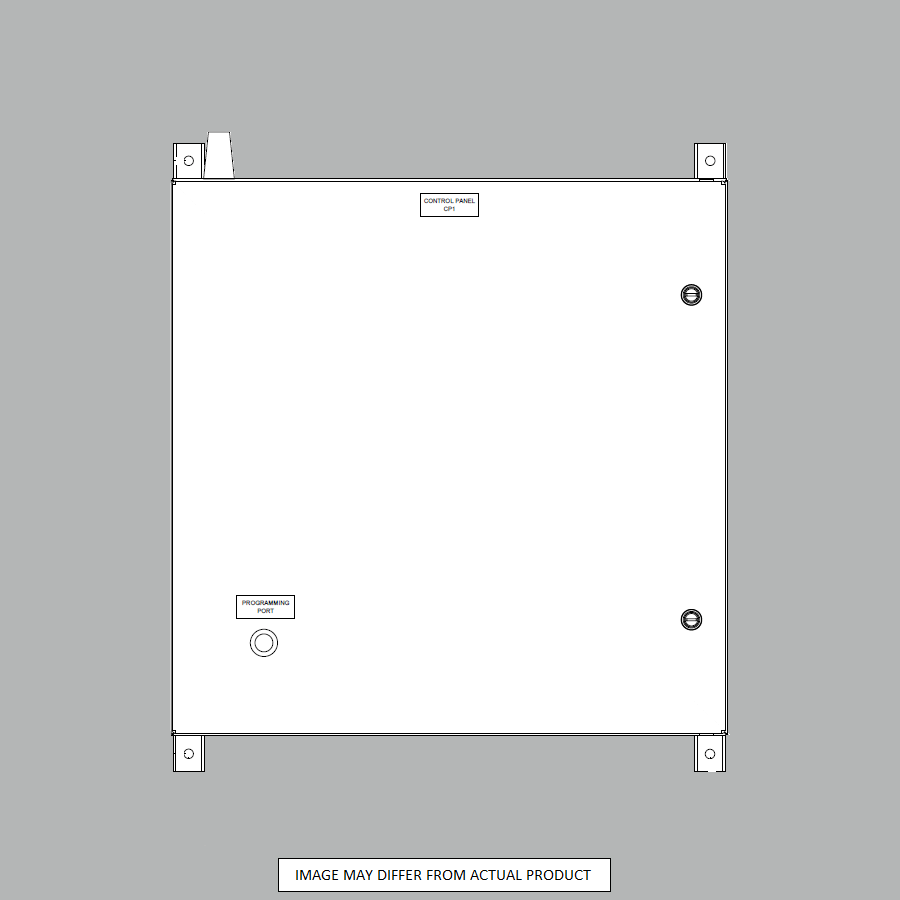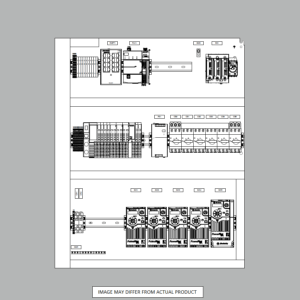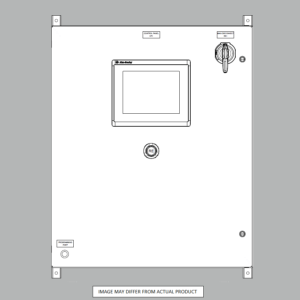Micro PLCs: Unlock Industrial Automation, Powerful Logic Control
Manufacturing automation continues to embrace advanced technologies to optimize processes and boost productivity. One innovation that has been a game-changer is the micro PLCs or programmable logic controller. These compact yet mighty devices provide versatile control perfect for automation applications, both large and small.
This in-depth guide will explore what makes micro PLCs advantageous and how to unleash their capabilities for your unique automation challenges. Whether you’re an engineer, electrician, or automation programmer, understanding micro PLCs is key to streamlining control systems. We will also discuss why we have chosen Micro800 PLC by Allen-Bradley for our automation products. Let’s dive in!
The Rise of Micro PLCs for Industrial Control
Before PLCs (programmable logic controllers), industrial automation commonly relied on rigid relay-based systems. However, relays didn’t allow for much flexibility or customization. The advent of PLCs revolutionized the automation industry by introducing software-based logic control.
Engineers could program intelligent controllers to execute logic and make decisions for running machines, processes, and facilities. No more needing to physically rewire systems!
Early PLCs were still relatively large, however, and lacked some of the sophisticated features of modern versions. The eventual development of the micro PLC changed the game again.
Micro PLCs cram the power and capabilities of their larger counterparts into a modular, compact format. Leveraging the latest CPU technologies, micro PLCs provide high-speed, deterministic control perfect for small- to mid-sized automation systems.
Some of the key advantages micro PLCs introduced included:
- Small physical footprint
- Highly flexible I/O configurations
- Modular and expandable hardware
- Modern comms and data handling
- Intuitive programming environments
These features made micro PLCs accessible and beneficial for users at all levels of automation. Their simplicity, versatility, and low cost opened up intelligent automation like never before.
Key Features and Benefits of Modern Micro PLCs
Micro PLCs on the market today share common capabilities that make them so well-suited for industrial control. Understanding these core features helps clarify the value micro PLCs can bring your application.
Powerful Processing Capabilities
At the heart of any micro PLC is its CPU, which handles all the main logic, I/O handling, communications, and data manipulation. Modern micro PLCs equip their CPUs with high-speed processors to crunch data and execute control programs rapidly.
High-end micro PLCs may leverage ARM or other advanced processor architectures for maximum performance. Combined with sizable memory resources, these make micro PLCs smooth, responsive, and reliable automation controllers.
Modular Design for Custom Configurations
One huge advantage of micro PLCs is their modular expansion capabilities. Most feature I/O slots and ports to add many plug-in modules. Common types include:
- Digital input/output modules
- Analog input/output modules
- RTD input modules
- Thermocouple modules
- Relay output modules
- Serial communication modules
This modularity lets you customize the micro PLC with exactly the I/O your application demands. Additional slots allow seamless expansion when future needs arise.
Industrial-Grade Communication and Connectivity
Robust communication for automation is mandatory, and micro PLCs step up with industrial networking built-in. This includes protocols like:
- Ethernet
- EtherNet/IP
- Modbus TCP
- PROFINET
- Serial comms like RS-232/RS-485
Modern connectivity provides fast, reliable integration with HMI, SCADA, databases, drives, instruments, and other control hardware.
Intuitive Programming Environment
Efficient automation requires user-friendly controller programming. Micro PLCs use standard IEC 61131-3 programming languages for fast development:
- Ladder Logic (LD) – Graphical, like relay logic
- Function Block Diagram (FBD) – Graphical using function blocks
- Structured Text (ST) – Text-based language
- Instruction List (IL) – Low-level assembler-like language
This includes ladder logic, the most common and easiest to learn. The languages are programmed using Windows-based software with intuitive editor interfaces. Options like offline simulation speed up programming by testing logic before downloading to the micro PLC.
Rugged and Reliable Construction
Designed specifically for industrial environments, micro PLCs feature rugged enclosures and construction. They withstand vibration, shock, temperature extremes, and other hazards.
Watchdog timers, anti-latch circuits, and noise filtering ensure reliable operation. Careful component selection and testing means long service life.
A micro PLC won’t skip a beat when things get tough on the plant floor.
Other Noteworthy Capabilities
- Data logging – Most micro PLCs allow logging control data to removable SD card memory or other storage. This facilitates analyzing performance and troubleshooting.
- Remote connectivity – Built-in web server capabilities enable monitoring and troubleshooting PLCs remotely via device or browser-based apps.
- Security – Micro PLCs offer security mechanisms like password protection and SSL/TLS encryption for web-based communications.
- Troubleshooting features – Debugging tools like status LEDs, event logs, and diagnostics screens simplify support.
- Scalability – Software and hardware features allow seamless integration of remote I/O drops and expansion modules.
As you can see, modern micro PLCs pack incredible capabilities into compact form factors. This power and flexibility benefit practically any automation application.
Common Applications for Micro PLCs
The versatility of the micro PLC makes it the perfect automation controller for many industrial sectors and uses. Here are some of the most popular:
Machine Control
Micro PLCs excel at controlling industrial machines like assembly lines, CNC machines, presses, motors, and more. Their fast performance meets machine timing requirements, while their modular I/O simplifies interfacing sensors, actuators, drives, and other devices.
Process Control
From batch mixing to flow control, micro PLCs have the capabilities to manage processing operations. PID loops, timers, counters, and math functions program easily in ladder logic or function blocks.
Building Automation
Micro PLCs are ideal for controlling HVAC, lighting, access, and other systems inside commercial buildings and facilities. Their small size and flexibility simplify the installation and integration of sensors and field devices.
Remote Monitoring
The remote connectivity of micro PLCs is ideal for monitoring pipelines, well heads, pumping stations, and distant equipment. Built-in security prevents unauthorized access.
Automated Guided Vehicles
The compact design of micro PLCs makes them perfect for controlling AGVs, delivery robots, and other self-guided mobile vehicles. Their hardened construction handles vibration.
Smart Agriculture
A micro PLC provides an affordable solution with wireless communication options for greenhouses, irrigation systems, or monitoring livestock.
Home Automation
Micro PLCs’ versatility and robust performance bring commercial-grade control to homes. From security systems to lighting, micro PLCs manage a modern smart home.
This list highlights the remarkable breadth of automation scenarios micro PLCs can tackle.
Selecting the Right Micro PLCs
With so many micro PLC models available from automation manufacturers, choosing the right one for your project deserves careful consideration:
- I/O requirements – Calculate your total I/O count and types needed, allowing room for near-future growth. This determines the minimum PLC size and specs.
- Speed and performance – High I/O counts, frequent communication, and complex logic may necessitate a higher-end PLC CPU.
- Communication protocols—Ensure the PLC offers the networking you need, such as EtherNet/IP, Modbus, Profinet, wireless, and more.
- Programming requirements – Pick a PLC with your preferred language support and robust software environment. Free software trials are invaluable.
- Operating environment – For extreme temperatures, dirty conditions, or hazardous locations, select a ruggedized PLC model.
- Budget – Fortunately, even premium micro PLCs are cost-effective. But choose features to match the budget for your project or application.
- Support – A reputable PLC vendor that offers training, videos, forums, and responsive technical support can be critical in the long term.
While micro PLCs share common core features, choosing the ideal one still requires research. But the effort pays dividends with a PLC that tackles your project requirements.
Programming and Implementing Micro PLCs
Once you’ve selected the right micro PLC hardware for your application, bringing it online involves key software and integration steps:
Software Programming Environment
Modern programming software provides an intuitive development environment for PLC logic. Features like tag databases, simulated testing, and troubleshooting modules speed up programming.
Leverage software tutorials and documentation to help master essential functions like:
- Configuring hardware and I/O
- Developing ladder logic diagrams
- Using functions and function blocks
- Working with data registers and tables
- Communication setup and testing
Take advantage of software features like code library reuse to simplify programming.
Communication Setup
Establish communication early when integrating the PLC to streamline connecting HMIs, networks, and field devices. Proper network configuration and testing save issues down the road.
Input and Output Hookup
Carefully plan field device hookup and interface terminal layouts before installation. This avoids wiring issues and speeds up I/O checkout and debugging. Index I/O tags logically.
Operational Testing
Thorough testing ensures your automation application starts up successfully. Verify:
- Communication to all nodes
- I/O responds properly to field devices
- Logic executes as intended
- Safety shutdowns and alarms work
Fix any issues revealed before commissioning.
Operator Training
Even experienced operators benefit from PLC training on your specific application. Cover topics like:
- Hardware layout and configuration
- Software navigation
- Troubleshooting techniques
- Alarm response
- Recovery procedures
Proper introductory training makes for smooth ongoing operations.
While implementing micro PLC systems effectively takes diligence, their ease of use makes the process very learnable.
Realizing the Full Potential of Micro PLCs
Micro PLCs place versatile control capabilities into convenient, modular packages. They bring automation possibilities within reach for applications of all sizes and complexity.
To fully capitalize on their benefits for your systems, consider these final tips:
- Learn PLC programming – Become conversant in languages like ladder logic to access micro PLCs’ full features. Training resources are plentiful.
- Simulate before installing – Use offline simulation in programming software to de-risk automation projects. Refine logic and iron out issues before implementation.
- Select software carefully – Ensure your programming package provides all the tools and support features you need for seamless development.
- Size I/O appropriately – Plan adequate I/O for the application’s needs today and likely future requirements. Build in the room to grow.
- Leverage communications – Utilize the PLC’s Ethernet and industrial protocol connectivity to streamline data exchange throughout the automation ecosystem.
- Standardize for consistency – Sticking with a micro PLC vendor for all applications aids maintenance and operator familiarity. Reuse code libraries.
- Protect data – Use micro PLC data logging features to record runtime and production data. Back up programs externally in case of data loss.
- Embrace IIoT connectivity – Consider IIoT software platforms to aggregate automation data securely from multiple micro PLC locations to the cloud.
Micro PLCs have transformed automation possibilities for industries by making control technology so accessible. By understanding their capabilities and best practices, you can deploy them effectively to optimize your automation systems. The micro PLC future is bright – be ready to seize it!
Exploring the Micro800 from Allen-Bradley
In our Basic and Standard Automation products at Automation Ready Panels, we’ve chosen the Micro800 MicroPLC from Allen-Bradley as a key component. This choice isn’t arbitrary; the Micro800 brings together a blend of compactness, power, and versatility that’s hard to find in the market. Its significance in our product lineup highlights our belief in using technology that not only meets current needs but is also adaptable for the future.
Why we are using the Micro 800 PLCs?
A notable aspect of the Micro800 is its programming environment, provided by the free Connected Components Workbench (CCW) software. This software is a significant advantage for us and our customers. It offers an accessible yet powerful platform for programming, which simplifies the process of getting systems up and running. For those new to automation or seasoned experts, CCW provides an intuitive interface that makes it easier to develop and deploy automation solutions effectively.
Flexibility is another hallmark of the Micro800. Its modular design allows us to tailor our automation products closely to the specific needs of a project. This ability to customize and scale means that our solutions can evolve alongside our clients’ operations, providing a level of future-proofing that’s invaluable in today’s rapidly changing industrial landscape.
Our automation systems are scalable, thanks to the Micro800 PLCs. These can be integrated and are capable of communicating with our larger Advanced Automation products via Ethernet/IP. This setup allows companies to scale their business on demand without the need to replace or upgrade their existing Micro800 control systems. It saves on costs and time.
The Micro800’s compatibility with Industry 4.0 technologies, particularly its support for MQTT for IIoT communication, further sets it apart. This feature allows our products to integrate smoothly into larger, connected systems, facilitating data exchange and enabling smarter, more efficient operations. It’s an example of how the right technology can not only solve today’s challenges but also open doors to new possibilities tomorrow.
Choosing the Micro800 for our automation products reflects our commitment to providing solutions that are robust, flexible, and forward-looking. Its combination of user-friendly programming, adaptable design, and advanced communication capabilities make it a foundational piece of our approach to automation.
Key Takeaways: Micro PLCs for Automation
- Micro PLCs provide modular, high-speed logic control in a compact, affordable package.
- Key benefits include versatile I/O, industrial communications, rugged construction, and intuitive programming.
- Micro PLCs control machines, processes, buildings, vehicles, agriculture systems, etc.
- When selecting a micro PLC, consider performance, I/O needs, comms, environment, budget, and vendor support.
- Proper installation, programming, testing, and training unleash the full capabilities of micro PLCs.
- Standardizing on a micro PLC vendor aids maintenance and operator familiarity long-term across applications.
- Our Basic, Standard, and Advanced Automations in Automation Ready Panels use Micro800 as the included MicroPLC.
Work with us at Automation Ready Panels
Looking to step up your automation game? At Automation Ready Panels, we’ve got you covered with the latest in Micro PLC technology. Our team is all about finding solutions that fit just right for your setup. We’re here to help from the get-go, making sure everything runs smoothly. So, if you’re ready to make your automation easier and more efficient, contact us at Automation Ready Panels today. We’d love to hear about your project and see how we can help.
-
Large Process Automation: Panelview 5000, ControlLogix 5580
$24,073.00 Select options -
Small Process Automation: Panelview 5000, ControlLogix 5580
$20,321.00 Select options -
Small Process Automation: ControlLogix 5580, UPS Battery Backup, Cellular Modem
$18,999.00 Select options -
Advanced Automation: Panelview 5000, Safety CompactLogix 5380
$10,269.00 Select options





